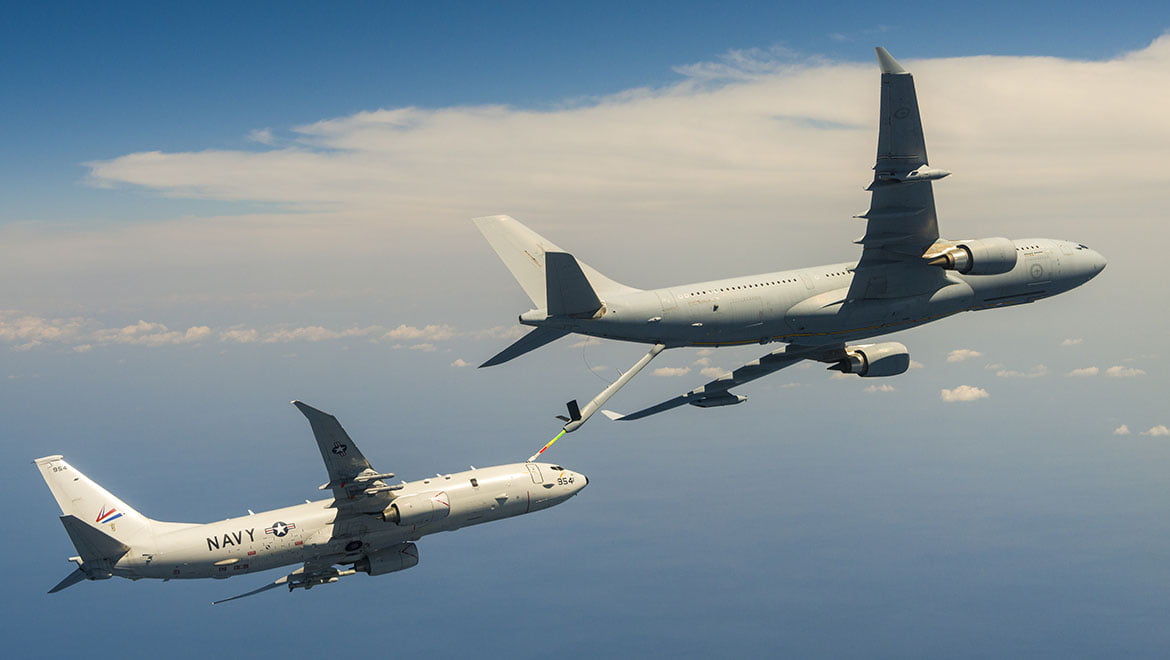The defence and space divisions of Airbus and Boeing are expected to go head-to-head as the Royal Canadian Air Force moves ahead with plans to replace its ageing fleet of CC-150 Polaris aircraft which have been fulfilling multiple roles, including executive transport as well as air-to-air refuelling platforms.
They’ll be responding to an Invitation to Qualify (ITQ) for the RCAF’s Strategic Tanker Transport Capability (STTC) project, posted Feb 12 by Public Services and Procurement Canada (PSPC) on behalf of the Department of National Defence.
The STTC was part of the government 2018 Strong, Secure, Engaged defence policy paper and in posting the ITQ, the earliest phase of a procurement, PSPC said it was “neither a call for tender nor a Request for Proposal and is not to be considered . . . a commitment by Canada.”
Industry has only two weeks to respond. In closing the invitation Feb 26, the government is effectively acknowledging that Boeing and Airbus are the only companies capable of supplying suitable contenders.
The current Polaris fleet, flown by 437 Transport Sqn out of Canadian Forces Base Trenton, Ontario, is comprised of five Airbus A310-300s acquired in 1992 from Canadian Airlines. Two were converted to tankers in 2008 in support of the RCAF’s Boeing CF-188 Hornet fighter fleet and are projected to end service in about five years, possibly coinciding with first deliveries of the Hornets’ replacements.
Boeing would offer its KC-46 Pegasus, a derivative of its 767 commercial platform, which was selected by the U.S. Air Force a decade ago as a replacement for its 400 or so Boeing KC-135 Stratotankers which began entering service in 1957, supporting fighters in the Vietnam War and, later, in the 1990-91 Gulf War.
In addition to its tanker role, the KC-46 can be configured for up to 18 cargo pallets, 114 passengers, or aero medical missions. However, the USAF has been fraught with technical problems and production issues.
Late last month, the company confirmed that “production inefficiencies” were the main factor in it taking an additional $275 million charge on the program. That meant Boeing had incurred more in cost overruns as the USAF had invested in developing the platform – more than $5 billion on a contract with a $4.9-billion ceiling.
As for Airbus, it has been promoting its A330 multirole tanker transport (MRTT), which it has sold to a dozen countries with 42 of 60 orders completed by the January. Airbus delivered the first of eight A330 MRTT to the NATO Multinational Multi Role Tanker Transport Fleet in June 2020.
A variant of the A330-200 commercial airframe, the MRTT has a fuel capacity of 111 tonnes and is configurable for up to 300 passengers, 130 stretchers or 37 tonnes of cargo.
This article was published by our partner Front Line Defence on February 12, 2021.
The featured photo: An Australian KC-30A Multi Role Tanker Transport (MRTT) from 33SQN, operated by the Aircraft Research and Development Unit, conducts aerial refuelling compatibility flight testing over the Atlantic Ocean with a United States Navy P-8A Poseidon from Air Test and Evaluation Squadron Two Zero.


